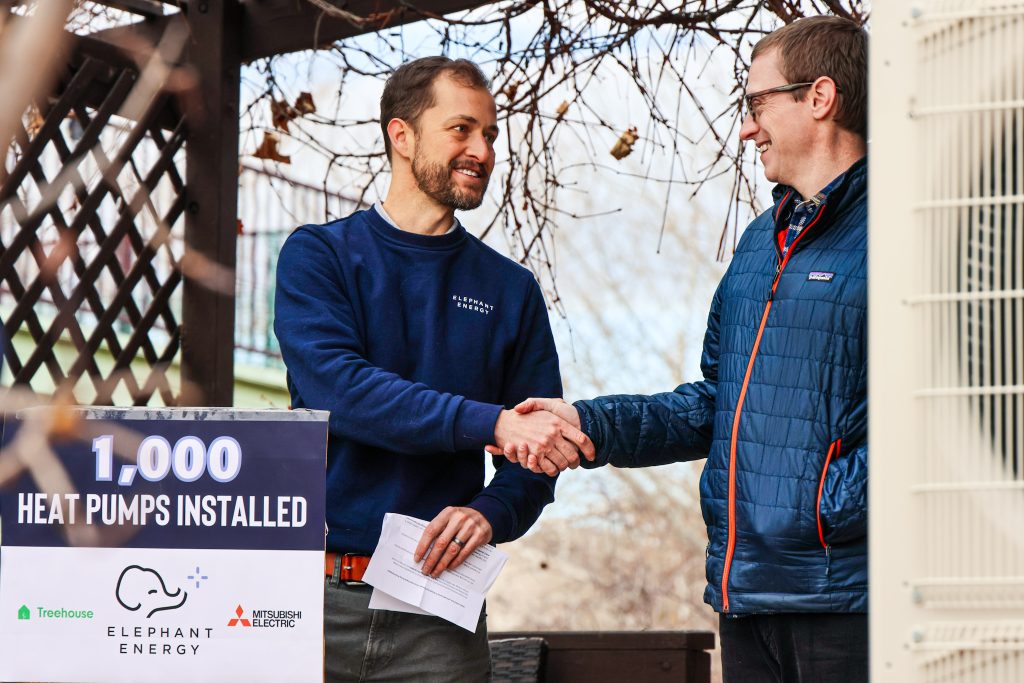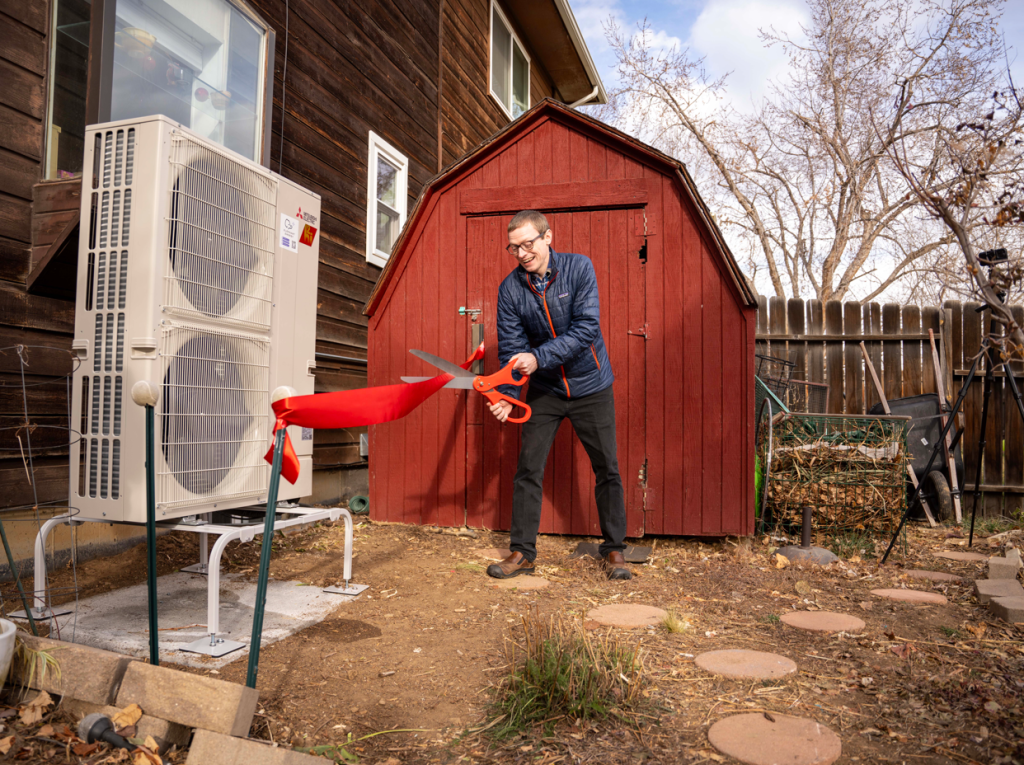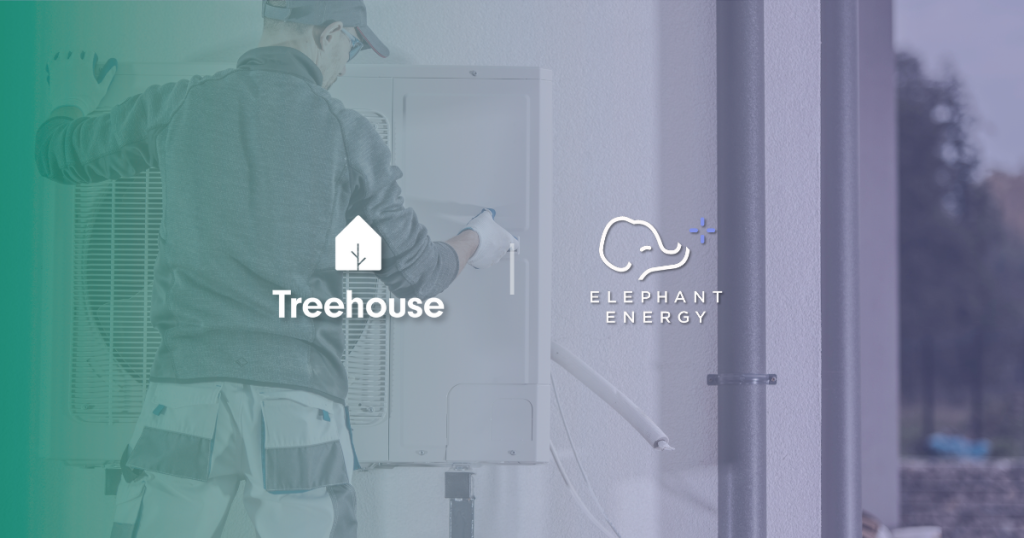We’re officially in the comma club (best Christmas ever).

This week, Elephant Energy celebrated a milestone we’ve dreamt about since day one: our 1,000th heat pump installation.
It took us 15 months to install our first 100 heat pumps. Today, we’re installing 100 heat pumps every month. Reaching 1,000 installations is a huge milestone – not just for Elephant Energy, but for the climate. Homes contribute 20% of climate-related emissions annually, and heating and cooling are the biggest culprits. Thanks to these 1,000 installations, our homeowners have collectively prevented more than 4,000 tons of carbon emissions that would have come from gas-powered furnaces (that’s equivalent to the emissions from driving more than 17 million miles in a gas-powered car).
At Elephant, supporting our communities is at the heart of what we do, and it was a no-brainer to celebrate this 1,000th milestone by giving back to our community during the holiday season.
We were thrilled to donate a brand new cold-climate Mitsubishi Heat Pump to a deserving family in Lafayette, Colorado – an upgrade that will bring them year-round comfort, lower energy bills, and a smaller carbon footprint. For us, this wasn’t just about hitting a number. It was about showing what’s possible when we prioritize accessibility and affordability in electrification.
Colorado homeowner Justin Bailey had been living without central cooling, and hoped to switch to a heat pump to reduce his fossil fuel use, but was waiting for the Inflation Reduction Act (IRA) rebates to roll out in Colorado. Here at Elephant, we know that electrification has been inaccessible or unaffordable for far too many people for far too long, and we have made it our mission to change that. That’s why we stepped in to make his heat pump dream a reality.

“I’m a huge believer in electrification – for the climate, for your health, and for the comfort and efficiency it brings. A year ago, I started looking into getting a heat pump, but quickly realized I couldn’t afford it. I explored all the rebate programs out there, and then this amazing surprise opportunity came along from Elephant Energy. My heat pump has only been running since yesterday afternoon, but it’s completely silent, and I couldn’t be happier.” says Justin.
You know we love ribbon cuttings, so in true Elephant fashion we grabbed our Elephant-sized scissors and gathered with our local partners from the City of Lafayette, Xcel Energy, Go Electric Colorado, Rewiring America, Sierra Club, and Boulder County to celebrate this milestone and hear from the leaders on the important role they’re all playing in the home electrification movement.
We’ll continue to shout it from the rooftops: Electrification is a collective movement. This milestone is a testament to what can be achieved when people and organizations come together to make electrification a reality. Big thank you to our valued partners, Treehouse, CD Jones, and Mitsubishi, who generously covered the cost of electrical work and equipment to help make this installation a reality.
“We’re thrilled to be working with our partners at Elephant Energy to make the implementation of clean energy technology, like heat pumps, more accessible. Through our joint efforts, we hope to make the home electrification process simpler and enable homeowners to embrace sustainable technologies with greater ease and affordability.” says Eric Owski, Founder and CEO of Treehouse.
As we look ahead to our next 1,000 installations, we’re inspired by the collaboration and shared vision that got us here. Here’s to a future where every family has access to the benefits of clean, efficient technology – and to building it together.
Happy Heat Pump for the Holidays. ❤️🎀

